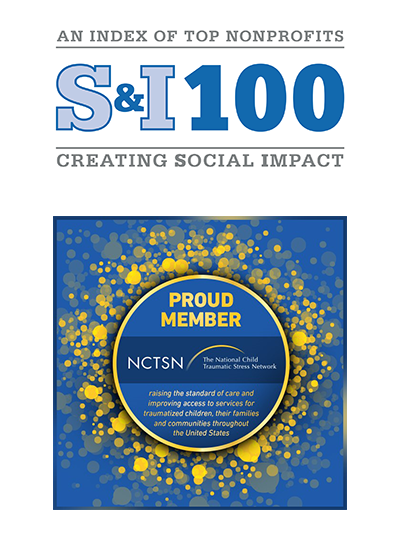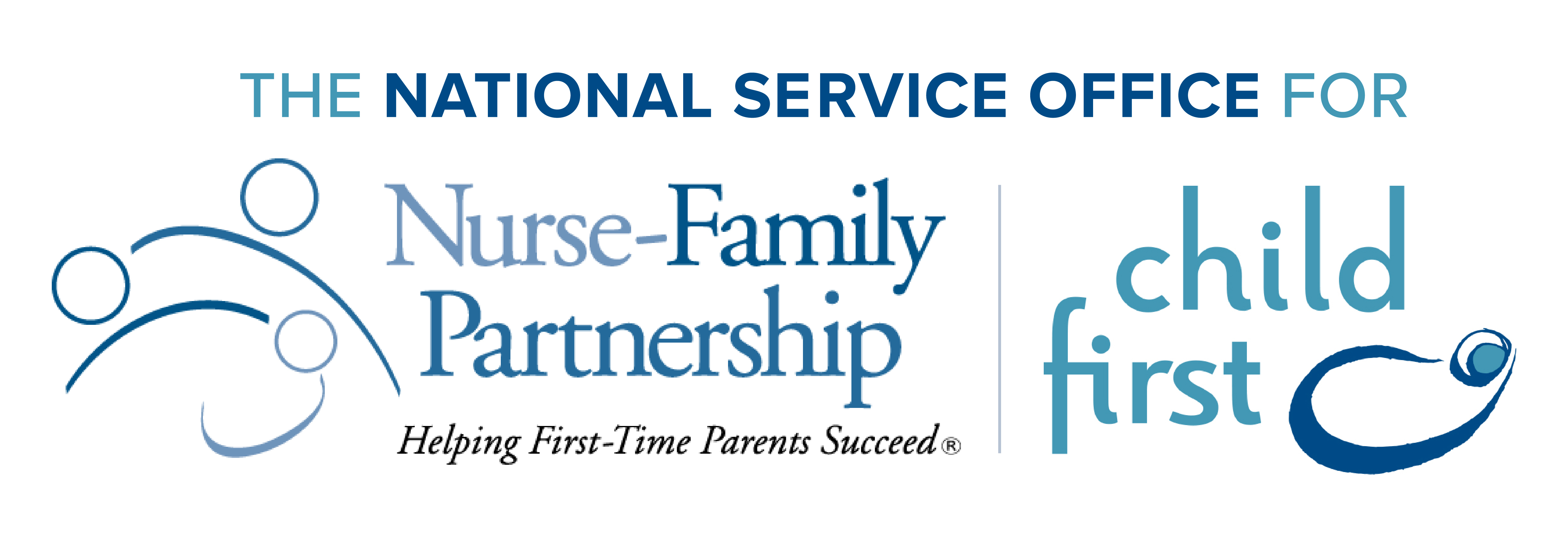A Randomized Controlled Trial of Child First
Description
In 2001, Child First received a Starting Early Starting Smart federal grant from the Center for Substance Abuse Prevention (CSAP) of the Substance Abuse and Mental Health Services Administration (SAMHSA) of the U.S. Department of Health and Human Services (HHS), to support a randomized controlled trial of the Child First model. A randomized controlled trial is considered the highest level of scientific evidence of the effectiveness of an intervention. This is one of the few randomized controlled trials to test the effectiveness of an integrated home-based, psychotherapeutic, family intervention embedded in an early childhood system of care with young, vulnerable children from high risk families. Funding for data analysis was provided by the Robert Wood Johnson Foundation.
Children between the ages of 6 and 36 months were identified through screening at the Bridgeport Hospital Pediatric Primary Care Center and the Bridgeport Health Department’s Women, Infants, and Children (WIC) Nutrition program. Caregivers who participated identified as belonging to the following racial/ethnic background: 59% Latino, 30% Black, and 7% Caucasian. Risk factors were extremely high with 93% receiving public assistance, 64% unemployed, 53% without high school diploma or GED, 67% unmarried, 54% with depression, 44% with a family history of substance abuse, and 25% with a history of homelessness.
Seventy-eight (78) children were randomly assigned to the “Child First Intervention” or the treatment group, while seventy-nine (79) children were randomly assigned to “Usual Care” or the control group which received the normal standard of care for children in the absence of Child First. The results of this trial described below are the basis of a peer-reviewed article published in the January/February 2011 issue of the journal Child Development.
Results of the Randomized Trial
The study found clinically and statistically significant impact on child and family outcomes:
- Children’s mental health: Children in the Child First Intervention were 42% less likely to have externalizing symptoms (meaning aggressive, defiant, disruptive, or hyperactive behavior) than children in Usual Care at 12 month follow-up, using the Infant-Toddler Social-Emotional Assessment (Odds ratio = 4.7, moderate effect size).
- Language delays: Language delays were 68% less likely for children participating in Child First intervention than those in the Usual Care group to have language problems at 12-month follow-up (Odds ratio = 4.4), using the CT Infant-Toddler Developmental Assessment Language Scale. Among those with baseline language problems, competent language was observed in 80.0% of Child First Intervention compared with 36.4% of Usual Care children. Examination of language problems at 12 months, stratified by the presence or absence of language problems/delays at baseline, suggests that the effect observed in the logistic regression reflects both remission of existing problems and prevention of new problems in families in Child First compared with Usual Care.
- Maternal mental health: Mothers’ mental health was evaluated along dimensions of overall mental health, depression, and parenting stress. Mothers in the Child First Intervention were 64% less likely than mothers in the Usual Care group to report scores in the clinical range for mental health issues at 12 month follow-up, using the Brief Symptom Inventory (Odds ratio = 4.0). The pattern of findings suggests that this reflects both a reduction in maternal symptoms and a prevention of new symptoms among mothers in Child First, relative to Usual Care. Mothers in Child First had significantly lower depressive symptoms than those in Usual Care at 12 month follow-up, using the Center for Epidemiology Scale-Depression (CES-D). Mothers in the Child First Intervention were less likely to report high Difficult Child Parenting Stress at 6 month follow-up and less likely to have a Parenting Stress Index score in the clinical range at 12 months (Odds ratio = 3.2).
- Involvement in Child Protective Services: The Child First Intervention group was 39% less likely than the Usual Care group to be involved with protective services during the 12 month follow-up period (Odd ratio = 4.1 for parental self-report). The Child First Intervention continued to be 33% less likely to be involved with protective services at three year follow-up (Odds ratio = 2.1 based on child protection records).
- Access to services: The Child First Intervention group had 91% of service needs met at 12 month follow-up, compared with only 33% in Usual Care group (with a large effect size). A mean of 15 services were accessed by Child First families.
- Parent satisfaction: Parents reported very high satisfaction with services received, with a mean score of 4.60 on a scale of 1.0 to 5.0.
These results obtained in the SAMHSA randomized trial are conservative estimates of the actual impact of the current Child First model for two reasons. The analysis of the data from the randomized trial utilized the very rigorous “intention to treat” model, to prevent any sample bias. Therefore, the results of the trial underestimate the effects that would be expected with community implementation. Furthermore, since the randomized trial was completed in 2005, the Child First model has continued to strengthen based upon experience in the field and continuous quality improvement.
Reference:
Lowell, D.I., Carter, A.S., Godoy, L., Paulicin, B., Briggs-Gowan, M.J. (2011). A Randomized Controlled Trial of Child First: A Comprehensive, Home-Based Intervention Translating Research into Early Childhood Practice. Child Development, 82(1), 193-208.
For additional information: See Addendum to Child First RCT
Evaluation of a Wraparound Process for Children Exposed to Family Violence
Child First was funded by the Bridgeport Safe Start Initiative (BSSI), which received funds from the Office of Juvenile Justice and Delinquency Prevention. From August 2004-October 2006, Child First participated in an evaluation of children ages birth to six years who were exposed to violence in their homes or community and who subsequently received home-based intervention from Child First.
Two hundred and eighty children were screened for violence exposure; 143 (51%) were positive and 132 received services. Eighty-two participated in the follow-up study, with a mean age of 3.3 years. Ethnic breakdown showed 55% Latino, 27% Black, 9% Caucasian, with 87% on Medicaid. Children were predominantly referred from early care and education, child protective services, domestic violence agency, physical health providers, WIC, and parents. They experienced an average of 3.7 traumatic events in their lifetime. Services were provided for a mean of 7.5 months, approximately 1.7 hours per week.
The evaluation was conducted by independent research staff at the Yale University Consultation Center and was published in Best Practices in Mental Health: An International Journal in 2008. Results showed a statistically significant decrease in parenting stress, improvement in child social-emotional and behavioral health, and markedly increased access to community based services (82%). Specific outcomes included:
- A significant decrease over time in the number of potentially traumatic events that children experienced, including family and non-family violence (t(81) = 8.61, p < .00).
- A significant decrease over time in post-traumatic stress intrusive thoughts (t(37) = 2.90, p=.007and avoidance behaviors (t(37) = 2.80, p = .009), showing an impact on important post-traumatic symptoms that children are likely to experience.
- A significant decrease in parent’s total distress (t(75) = 3.81, p < .05).
- Post-traumatic symptoms improved more for those in service longer.
- Parent satisfaction with services was very high, with a mean of 4.55 on a scale of 1.0 to 5.0.
- Families received very high levels of services, with a mean of 20 services per family, and 84% received services within 90 days.
Reference:
Crusto, C.A. Lowell, D.I., Paulicin, B., Reynolds, J., Feinn, R., Friedman, S. R., & Kaufman, J. S. (2008). Evaluation of a Wraparound Process for Children Exposed to Family Violence. Best Practices in Mental Health: An International Journal, 4(1), 1-18
Evaluation of a Mental Health Consultation Intervention in Preschool Settings
From 2005-06, the Yale Consultation Center evaluated Child First’s provision of mental health consultation in early childhood education classrooms in Bridgeport, Connecticut. Fifteen classrooms serving three, four, and five year old children were included, totaling 261 children. All classrooms were under the auspices of Action for Bridgeport Community Development. Funding came from the Early Learning Opportunities Act from the federal Department of Education. The children were largely of ethnic minority (54% African-American, 36% Latino, and 3% Caucasian). Teachers primarily self-identified as belonging to a minority racial/ethnic group: (64% African-American, 21% Latino, and 14% Caucasian). None of the teachers had obtained Bachelor’s degrees.
The preschool version of the Devereux Early Childhood Assessment (DECA) was administered to both teachers and parents at baseline and then again at five to six month follow-up. Emotional protective factors (including Initiative, Attachment, and Self-Control) and Behavioral Concerns were measured with the preschool version of the Devereux Early Childhood Assessment (DECA). The intervention specifically targeted those children who had either low protective factors (t scores of 40 or less) or high behavioral problems (t scores of 60 or more). The subgroup of children who demonstrated lower levels of protective factors and/or higher levels of behavioral difficulties exhibited statistically significant improvements from baseline to follow-up (p<.001) on all five domains as assessed by both teachers and parents: total protective factors (strength of protective factors), initiative (ability to use independent thought and action to meet their needs), self-control (ability to experience and express a range of emotions in socially appropriate ways), attachment (development of relationships with significant adults), and behavioral concerns (challenging behaviors). These improvements were large and noticeable (with a large effect size between .8 and 1.0). Results indicate that, although all children benefited from the intervention, those demonstrating lower resilience and greatest need benefited the most.
Furthermore, teachers receiving this consultation reported a marked, statistically significant increase in feelings of effectiveness in their understanding of emotional/behavioral issues on a self-efficacy scale (t=3.91, P=.002), and indicated very significant satisfaction with the consultation and increased confidence in their ability to develop and implement strategies to help the children with challenging behaviors in their care.
Reference:
Crusto, C.A., Whitson, M.L., Feinn, R., Gargiulo, J., Holt, C., Paulicin, B., Simmons, W., & Lowell, D.I. (2013). Evaluation of a Mental Health Consultation Intervention in Preschool Settings. Journal of Infant Mental Health, 9(2), 1-21.







